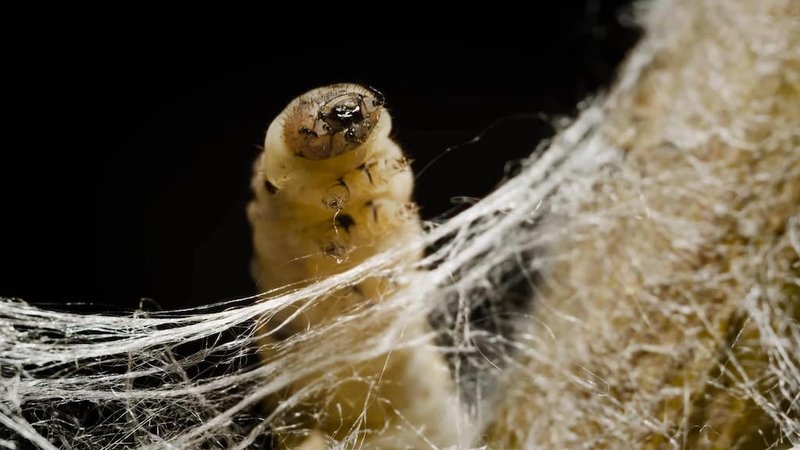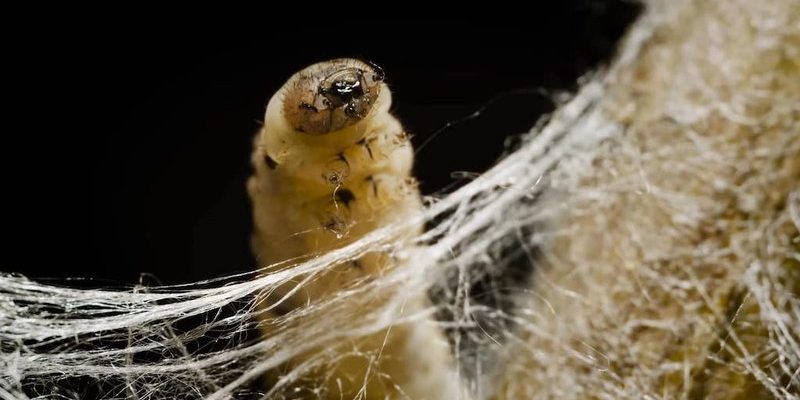
Imagine you have a tiny friend living in a bustling city. This friend can’t see everything around them clearly but knows when it’s bright outside or when someone is rushing by. Silkworms operate on a similar level—while they may not have a sophisticated vision like humans, they can still respond to their environment in useful ways. Let’s dive into how these incredible creatures perceive light and movement and explore the science behind it.
How Do Silkworms Sense Their Environment?
Silkworms, scientifically known as *Bombyx mori*, are fascinating little creatures. They belong to the moth family and have a unique lifestyle that revolves around silk production. But how do they interact with their surroundings? Silkworms rely heavily on their sensory organs, which help them navigate and respond to changes in their environment.
These insects have simple eyes, called ocelli, which allow them to detect light intensity. While they can’t see in full detail like mammals, they can sense changes in brightness. This ability is crucial for their survival, as it helps them identify day and night cycles, guiding their feeding and spinning behaviors. Think of these ocelli as light meters, alerting the silkworm when it’s time to munch on mulberry leaves or start spinning silk.
Besides ocelli, silkworms also have other sensory structures located on their bodies. These include tiny hairs called mechanoreceptors, which can pick up vibrations and movements in the air. When something moves nearby, these hairs send signals to the silkworm’s nervous system, prompting a reaction. This sensory setup helps silkworms avoid predators and find mates, making them quite adaptable despite their limited vision.
The Role of Light in Silkworm Behavior
You might be curious about how light specifically influences silkworm behavior. Silkworms are nocturnal feeders, meaning they like to chow down at night. But what does that have to do with light? Well, silkworms have a natural rhythm influenced by the light they experience. This rhythm is known as circadian rhythm, which regulates their daily activities.
During the day, light levels rise, signaling the silkworms to rest and conserve energy. When it gets dark, their environment becomes less intense, and they are more active, seeking out food. Without proper light exposure, their behavior could become erratic, affecting their growth and silk production.
Interestingly, scientists have studied how light intensity can impact silk quality. Silkworms fed and raised under specific lighting conditions exhibit distinct silk properties. Some studies suggest that certain wavelengths of light can enhance silk secretion. This fascinating connection between light and silkworm behavior highlights the importance of their sensory perception in producing high-quality silk.
Do Silkworms Respond to Movement?
Absolutely! Movement detection is a key part of how silkworms navigate their world. As mentioned earlier, their mechanoreceptors play a significant role here. When something moves nearby—be it a breeze or a predator—silkworms can sense those vibrations and respond accordingly.
For instance, if a larger animal approaches, the silkworm may contract or stop moving altogether to avoid being noticed. This instinctual behavior is vital for their survival. In a way, you could think of it like a game of hide-and-seek; these little guys are masters at staying out of sight when danger is near.
Furthermore, silkworms also respond to movements from their fellow silkworms. During the breeding season, the movements of potential mates can trigger responses that lead to mating behavior. This sensitivity to movement ensures that silkworms can find partners to reproduce, keeping their species thriving.
The Connection Between Light and Movement
You might be wondering how light and movement work together in the life of a silkworm. Well, the two senses are quite interconnected. Silkworms use visual cues from light to determine their activity levels while also relying on their ability to detect movement around them.
For example, when a silkworm senses movement in low light, it may increase its caution to avoid potential threats. Conversely, in brighter conditions, they may feel more secure and venture out to feed more actively. This interplay between sensing light and detecting movement creates a dynamic relationship that shapes their daily lives.
Interestingly, studies have shown that when researchers manipulate light conditions and introduce movement, silkworms exhibit different behavioral patterns. This demonstrates how crucial both senses are in guiding their actions and ensuring their survival in the wild.
Practical Implications of Silkworm Sensory Abilities
So, what does all this mean for us humans? Well, understanding how silkworms recognize light and movement has real-world applications. For one, it can help improve silkworm farming practices. Farmers can create optimal environments by adjusting light exposure and minimizing vibrations around silkworm habitats. This can lead to healthier silkworms and potentially higher silk yields.
Moreover, researchers are constantly studying these insects to explore their sensory systems further. Insights gained from silkworms can be applied in various fields, including robotics and artificial intelligence. By mimicking how silkworms sense their environment, engineers might develop better sensors for machines, allowing them to navigate complex surroundings more effectively.
In summary, the sensory abilities of silkworms not only shed light on their unique adaptations but also inspire innovations in technology and agriculture.
In conclusion, silkworms exhibit fascinating ways of interacting with their environment through their ability to recognize light and movement. While they may not see the world as we do, their sensory capabilities allow them to navigate their lives effectively. Understanding these abilities provides insight into their behavior and practical applications in farming and technology.
So, the next time you think about silkworms, remember that there’s more than meets the eye. These little creatures have evolved unique strategies to survive and thrive, reminding us that even the smallest beings have a story worth knowing. Understanding how they perceive light and movement not only deepens our appreciation for them but also opens doors for innovation inspired by nature.

